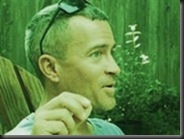By Milton Wendland
© 2012 Diversity Rules Magazine. All Rights Reserved.
www.diversityrulesmagazine.com
Milton Wendland is a licensed attorney and a professor of Women, Gender, & Sexuality Studies at the University of Kansas, where he teaches courses in LGBT cultures, sexuality and law, and queer theory.
 Why do people protest some movies or TV shows with LGBT characters but applaud others? Seems to me that anytime an LGBT person is on TV or in a movie, it’s a good thing. Just curious! Sheila
Why do people protest some movies or TV shows with LGBT characters but applaud others? Seems to me that anytime an LGBT person is on TV or in a movie, it’s a good thing. Just curious! Sheila
There are a number of LGBT organizations that try to keep track of how LGBT people are represented in the media. For example GLAAD (Gay & Lesbian Alliance Against Defamation) has been doing this sort of work for over twenty-five years. “Where We Are on TV” is the yearly GLAAD report that details how many and what types of LGBT characters appear on television, and GLAAD works with the media industries to be sure that LGBT concerns are presented with sensitivity.
One theory of LGBT rights is the visibility theory, the idea that the more we see and hear LGBT people the less likely we are to harbor anti-LGBT sentiment and hence we need to increase the number of LGBT characters on TV and in movies. This draws on years of work in sociology and psychology, including extensive work in “contact theory.” Contact theory holds that increased contact between two groups will lead to a reduction of inter-group bias. By including more LGBT characters in films and television, LGBT lives are normalized and made to seem less deviant or out of the ordinary. Some TV shows and movies are praised for this reason. For example, MTV’s reality show series “The Real World” has from its first season in 1992 featured LGBT cast members. The show is credited for introducing an entire generation to LGBT issues alongside issues of race, class, and gender. Similarly films like “Milk” and “TransAmerica”are heralded because they offer the stories of LGBT lives to mainstream audiences.
The flip side to this, however, is that sometimes TV shows and movies feature LGBT characters but in ways that aren’t necessarily as progressive as we might wish. For example, many people were angered by the Jame Gumb character in “Silence of the Lambs” because Gumb is a violent serial killer who appears to be transsexual. Not all representations are of the murder variety. Many people feel that “Queer Eye for the Straight Guy” portrays gay men negatively by showing them as only concerned with fashion, style, and haute cuisine. And other times the sexuality of a character is portrayed in oblique or ambiguous ways. For example, Fannie Flagg’s novel “Fired Green Tomatoes at the Whistle Stop Café” portrays two women in a lesbian relationship but the film version of the novel erases much of the lesbian content to the degree that many viewers read the two female characters as just friends.
For many such watch-dog groups the issue isn’t just that LGBT lives should be represented as beyond reproach or heroic but that the representations of LGBT lives should show the diversity of the LGBT population rather than focusing solely on LGBT lives as deviant, criminal, or oppressed. If you’d like to learn more about LGBT presence in film and on TV, check out the GLAAD website (www.glaad.org). You might also want to take a look at “The Celluloid Closet” based on Vito Russo’s book of the same name, which traces representation of gay men and lesbians in the movies or “Off the Straight & Narrow” and “Further Off the Straight & Narrow” which both focus on television.
